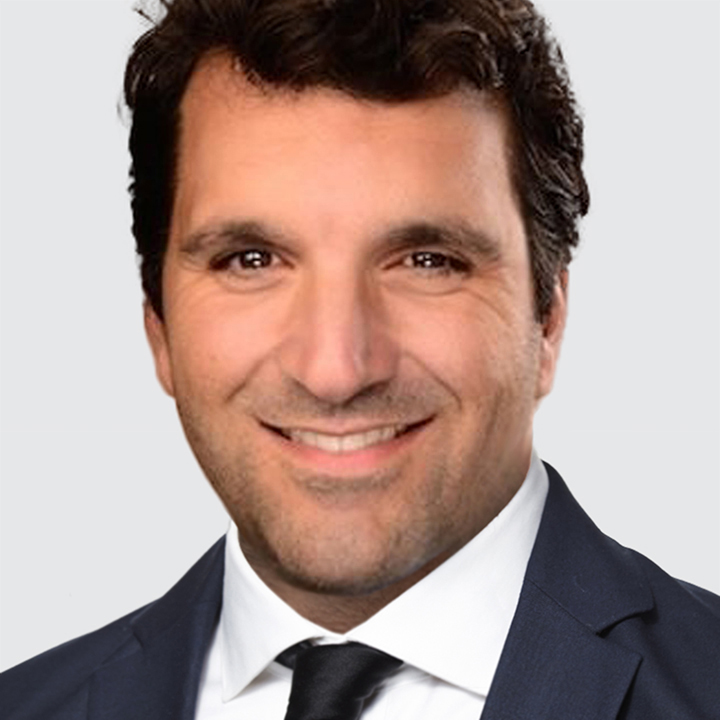US
USD recovered some of yesterday’s loss, S&P 500 futures are down after the underlying index hit a record high yesterday, and Treasury yields are up slightly. Markets are digesting ECB guidance and US CPI data.
The US economy is on the brink of stagflation. Progress towards the Fed’s 2% inflation goal is stalling. In line with consensus, headline CPI rose to 2.9% y/y in August vs. 2.7% in July and core CPI was unchanged at 3.1% y/y. Super core services (less housing), a good indicator of underlying inflation trends, printed at 3.2% y/y for a second consecutive month in August.
In parallel, the US labor market is worsening. New applications for weekly jobless claims unexpectedly jumped to 263k for the week ended September 6 (consensus: 235k) vs. 236k the previous week, the highest since October 2021. We expect the Fed to prioritize maximum employment over price stability within its dual mandate given that monetary policy is moderately restrictive. Bottom line: a more dovish Fed policy stance can drag USD lower and underpin the rally in risk assets.
The September University of Michigan preliminary consumer sentiment report is due today (3:00pm London, 10:00am New York). Headline is expected at 58.0 vs. 58.2 in August, well below the long run average at 84.4. More importantly, inflation expectations are likely to continue signaling that risks to the price outlook remain skewed to the upside. One-year inflation expectations are expected to print at 4.8% for a second consecutive month while inflation expectations 5 to 10 years out is seen at 3.4% vs. 3.5% in August.
UK
GBP ignored the UK July GDP data. Real GDP was flat m/m vs. 0.4% in June. Services and construction output both increased by 0.1% and 0.2%, respectively. Production output plunged -0.9% driven by declines in manufacturing and mining & quarrying.
Real GDP is tracking below the BOE’s Q3 growth projection of 0.3% q/q. Unfortunately, the BOE has limited room to dial-up easing to shore-up growth because UK services inflation is stubbornly high at 5.0% y/y. Bottom line: the UK’s soggy growth outlook and elevated underlying inflation spell trouble for GBP, especially versus EUR.
EUROZONE
EUR/USD is holding on to most of its post-ECB meeting gains. The ECB left the policy rate steady at 2.00% for a third consecutive meeting (widely expected) and signaled the easing cycle is over. The decision to stand pat was unanimous.
ECB President Christine Lagarde stressed again that monetary policy settings remain in a “good place” and that the risks to the economic outlook are now balanced rather than to the downside. Indeed, the ECB upgraded its 2025 real GDP growth outlook.
The ECB also implied greater confidence that inflation is stabilizing around its 2% target. Headline inflation forecasts were tweaked a tick higher for 2025 and 2026. Lagarde downplayed the downgrade to the 2027 inflation forecast from 2.0% to 1.9%, emphasizing instead that the disinflationary process is over.
The swaps market trimmed the probability that the ECB will deliver a 25bps cut in the next 12 months from 75% to 40%. In contrast, futures fully price-in 125bps of Fed funds rate cut over the next 12 months. Bottom line: relative ECB/Fed policy stance underpins the uptrend in EUR/USD.
BRAZIL
Brazil’s Supreme Court sentenced Jair Bolsonaro to 27 years and three months in prison for plotting a coup to remain in power after losing the 2022 election. Four of the five judges voted to convict the former president.
We expect a kneejerk downside move in BRL when the onshore market opens (1:00pm London, 8:00am New York) due to possible worsening in US-Brazil relations. President Donald Trump said he was “very unhappy” with the conviction, and Secretary of State Marco Rubio warned that the US government “will respond accordingly to this witch hunt.” Regardless, Brazil’s hefty real positive interest rates of nearly 10% suggest that any pullback in BRL will be brief and shallow.
JAPAN
USD/JPY is up near the middle of its 146.20-149.00 range that has held since early August. The US Treasury and Japan’s Finance Ministry released a joint statement on macroeconomic and foreign exchange matters. The statement reaffirmed that exchange rates “should be market determined” and not manipulated “to gain an unfair competitive advantage.” The last joint statement between the US Treasury and Japan’s Finance Ministry was in July 2022, and it made no reference to foreign exchange.

